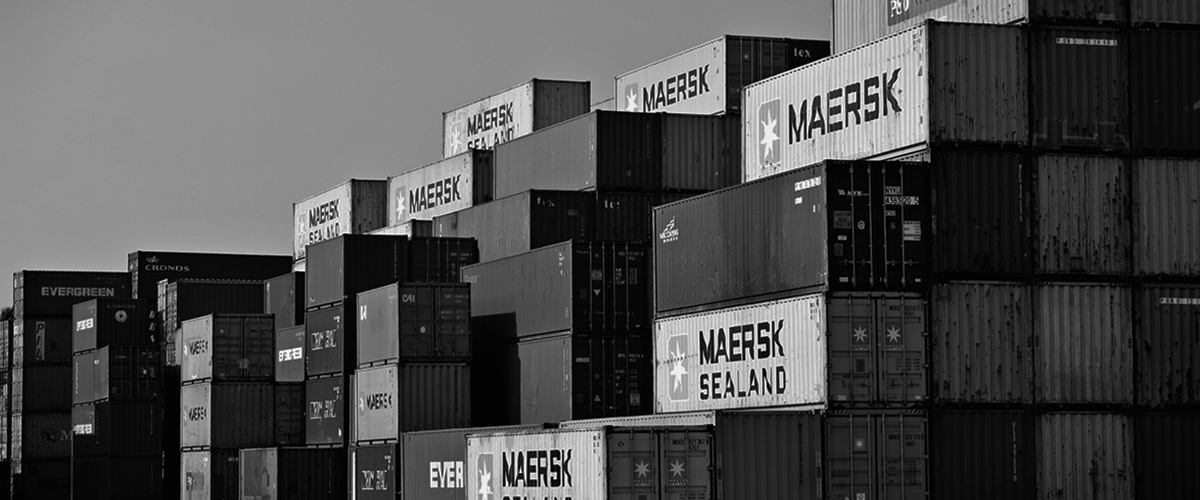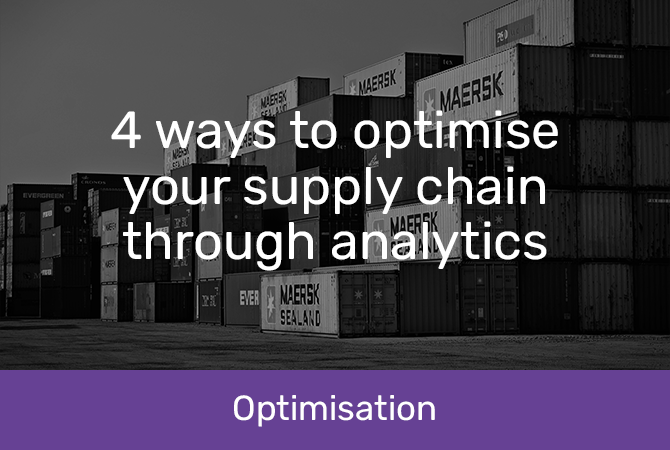
4 ways to optimise your supply chain through analytics
Businesses that sell products usually have supply chains, which can often be highly complex and convoluted – yet only 27% of businesses utilise any technology to monitor and optimise theirs, according to a recent BCI study. I’ve often had clients approach me and ask the following questions:
- How do we optimise our labour costs?
- How do we optimise our warehousing and distribution?
- How do we know where in the supply chain we could cut costs?
- Can we optimise across the supply chain rather than relying on local optimisations that cause disruption?
Many businesses are beginning to use data analytics for supply chain optimisation. In fact, Gartner predicts that by 2023, at least 50% of large international companies will be using AI and advanced analytics to optimise their supply chains. By diving into the data itself, it’s possible to isolate the impact of specific variables on the overall supply chain and understand the key relationships that lead to a better end-to-end result.
Here are four components of a supply chain that can see huge benefits from the application of advanced analytics.
1. Direct costs - the costs directly associated with making something. The overall goal here is to capture as much data as possible about what happens so we can understand the influence of each component on the outcome. Here are some examples:
- Isolating the impact of different people doing the same job with HR Analytics
- Optimisation of machine set-up schedules based on forecasted demand
- Material delivery optimisation and tolerance understanding to ensure bottlenecks are addressed and optimised to reduce downtime across the entire supply chain
- Optimising inputs for a part of the manufacturing process that is hard to measure, such as on the inside of high-temperature kilns to produce the lowest number of rejects
2. Indirect costs - the costs indirectly associated with making something, such as cleaning, engineering or management. You need to be able to collate all the data about those indirect costs and apportion them properly to the activities, and in doing so you can understand the true cost of production.
3. Warehousing and Logistics - applying analytics here can help you determine the lowest cost at which you can reliably deliver on your commitments to customers and release working capital. Here are some examples of components that can be optimised:
- Optimal warehouse and depot configuration (e.g. is it better to have one big warehouse, or a bunch of smaller warehouses throughout the country?)
- Scheduling and dispatch analytics to ensure best fleet utilisation
- Demand forecasting to optimise the initial distribution of merchandise
- Transportation asset optimisation to best match your fleet or contractors with network needs
4. Materials - the cost and quality of your materials can have a big impact on your supply chain and the final outputs. Here’s how analytics can be applied to this area:
- Modelling the likelihood of late shipments based on the material and carrier, ensuring transparency over the chain
- Modelling the likelihood of faults or rejects based on all the inputs to isolate and understand how different cost profiles and suppliers affect your outcomes (e.g. if you use a lower cost material or different supplier, does it result in a significantly higher rejection or return rate, thus actually costing you more money in the long run?)
Specific optima are important, but so is the whole supply chain.
It’s incredibly important to take an end-to-end view of your supply chain to see how the different areas interact with one another. For example, if your factory was down for an hour because your materials from a specific supplier didn’t arrive, this might impact both warehousing and materials and seem disastrous at the outset - but if all the places that supply your product to market can still deliver to customer expectations, it may not actually be a problem in the context of the whole supply chain because the area affected is not the bottleneck.
We typically advise our clients not to focus solely on streamlining one section of the supply chain and ignore the others, because in optimising one area, you can accidentally ‘unoptimise’ a different area and cause a more severe bottleneck to crop up somewhere else.
So where to start?
The analytics solutions mentioned above are great for businesses that are already doing some form of supply chain optimisation but are limited by the scenario modelling and data analytics tools that they have. Perhaps you can’t get all your data into your supply chain models, or you’re working in Excel and using averages instead of actuals, or you’ve already made improvements and you’re now looking for that extra 2-3% lift in efficiency.
It is quite hard to go from not having done any supply chain optimisation to a complete, analytically-driven optimisation. If you’ve got supply chain issues and you’re not sure where to start, I’d highly suggest you begin with a book like The Goal by Eliyahu M. Goldratt - in my opinion, it’s one of the best books you can read to stimulate useful thinking about your supply chain and your business as a whole. The other book I’d suggest if you’re more interested in addressing the impact of different financial approaches to supply chain is The Theory of Constraints and its Implications for Management Accounting. Both of these should give you great ideas that you can put into practice quickly for good effect.
 ABOUT THE AUTHOR: MATT WILKINS (PARTNER)
ABOUT THE AUTHOR: MATT WILKINS (PARTNER)
Matt is a passionate advocate for using data-driven intelligence to identify and address business challenges. A big supporter of implementing analytics in Marketing, Matt has the expertise to balance the technical, commercial and cultural considerations required to derive value from analytics.















































